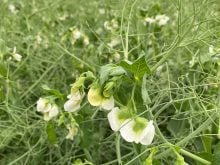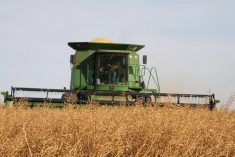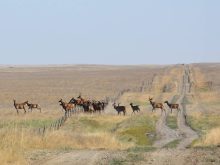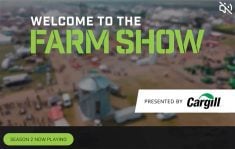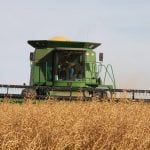Beef producers who find themselves with a forage surplus this summer may want to take advantage of the situation by decreasing feed production next summer and planting a cash crop instead.
“As the ongoing border closure issue challenges the industry, producers are struggling for solutions and management choices,” says Trevor Yurchak of Alberta Agriculture’s beef branch.
“Short-term planning is next to impossible, let alone long term, but long-term planning is still key. Choices made today could create opportunities next spring and summer.”
As the feed harvest season winds down, producers are encouraged to analyze their feed needs. In many areas, rainfall resulted in average to above average feed supplies.
Read Also
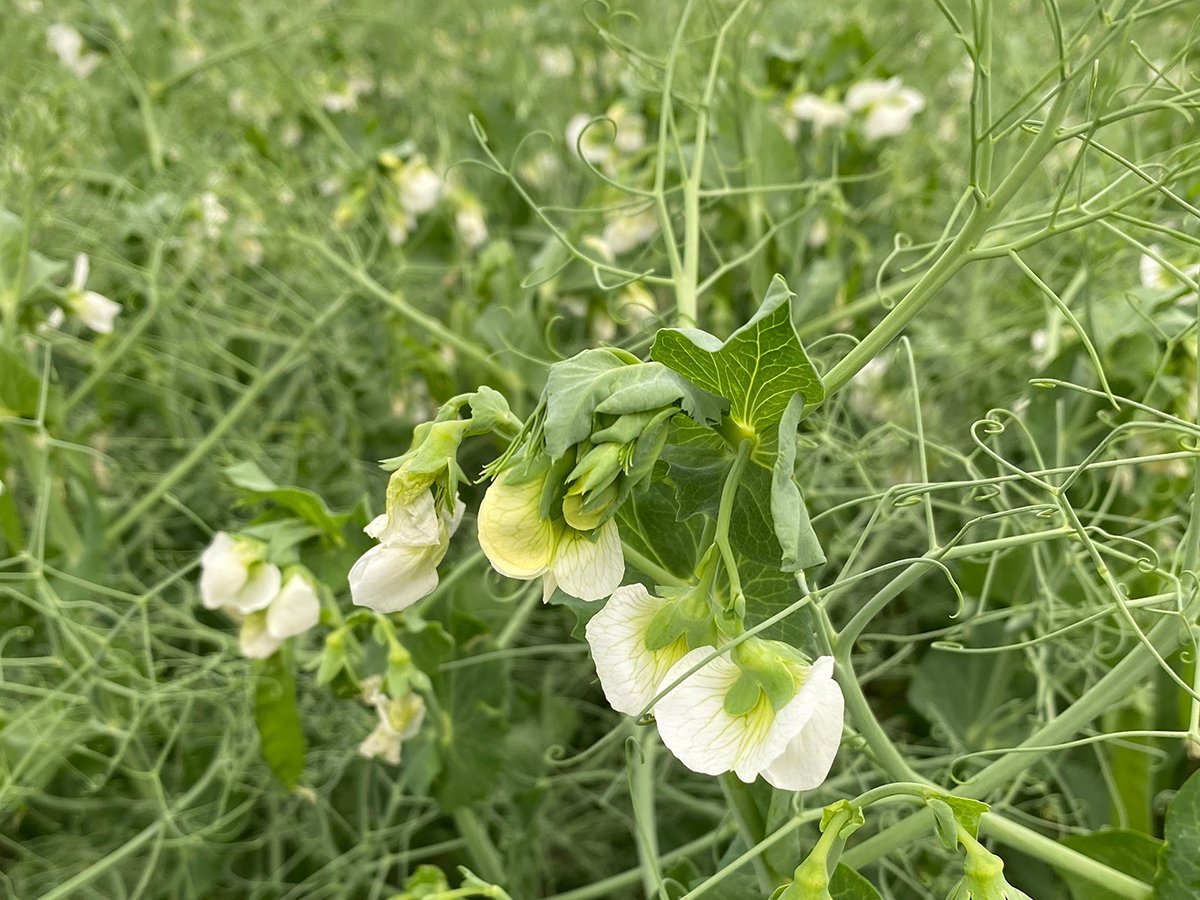
Crop quality looks good this year across Prairies
Crop quality looks real good this year, with the exception of durum.
“Storing more feed than is needed for the winter feeding season and carrying it through to the fall of 2005 may enable producers to put some acres into a cash crop next summer,” Yurchak said.
“Many beef producers wish they had a few acres of canola this summer to help pay bills. By building a surplus of feed, it may be possible to capitalize on a profitable cash crop next summer. Advance planning for this type of cropping change needs to start now. It is too late to plan for a crop change in March if you are short of feed.”
Part of planning for a cropping change requires determining feed needs. Look back at previous years’ feed supplies to help make decisions. An operation will need at least the same amount of feed as the average needed from the last three years.
“A good place to start calculating feed needs is the rule of seven, but remember this example is an estimate only and all operations will vary,” Yurchak said.
“For an average operation, a combination of tons of silage, bales of hay and bales of straw needs to add up to seven per mother cow. For example, you may need three tons of silage, two bales of hay and two bales of straw to feed a cow for the winter. Then decide on how much feed, if any, the feeder program may require. Backgrounding a feeder for 90 days after weaning will add another ton of hay or three tons of silage to a feed need list.”
Producers must then determine how much feed will be needed by cull cows that may not sell. This can add as much as 15 percent to the feed requirements.
“Finally, account for feed loss and spoilage,” he said.
“Many operations will waste over 20 percent in any given winter and this must be factored in. The amounts listed in this section are non-negotiable needs; in others words, they are the amount that must be harvested. Any feed further to this can be banked or stored for the 2005-06 feeding season.”
Proper storage is essential if producers plan to carry feed over to next fall. If it is a dry feed system, it may pay to cover with a tarp.
If buying hay for carry over, research has shown that twine spacing can seriously affect how well dry hay stores. One study compared four-inch to eight-inch twine spacing. The bales with four-inch spacing had 16 percent spoilage, while bales that had eight-inch spacing had 38 percent spoilage. The bales in this trial received 275 millimetres of rain, which is the average amount that could be expected to fall on carry-over feed.
When storing silage, choose the correct pile sizes and make multiple piles, which provides flexibility in choosing one or two to be carried over as supply dictates.
“Once a pile has been opened, it should not be carried over, even if it is resealed,” Yurchak said.
“The oxygen that enters will create excess spoilage.”
Choose a heavier plastic and ensure it has a UV rating that will allow a second summer of storage. Most chopped bag systems will store silage for 18 months while many manufacturers rate their plastic at only 12 months for bale or pit silage systems.
Try to carry over silage piles that are in locations with minimal risk of animal damage and on higher ground where there is less risk of water damage.
“Once you have harvested a surplus of feed, start looking at cropping choices and opportunities for next summer,” Yurchak said.
“Talk to market experts and other farmers to determine what crops may be profitable next summer. Learn about hedging and contracting options for crops. Look into custom seeding and-or harvesting in your area. You may only have 50 acres to work with, but it may be better than none. Remember, even smaller parcels of crop land require good management.”


